
Faneuil Hall is a marketplace and meeting hall located near the waterfront and today's Government Center, in Boston, Massachusetts. Opened in 1742, it was the site of several speeches by Samuel Adams, James Otis, and others encouraging independence from Great Britain. It is now part of Boston National Historical Park and a well-known stop on the Freedom Trail. It is sometimes referred to as "the Cradle of Liberty", though the building and location have ties to slavery.

Anne Whitney was an American sculptor and poet. She made full-length and bust sculptures of prominent political and historical figures, and her works are in major museums in the United States. She received prestigious commissions for monuments. Two statues of Samuel Adams were made by Whitney and are located in Washington, D.C.'s National Statuary Hall Collection and in front of Faneuil Hall in Boston. She also created two monuments to Leif Erikson.
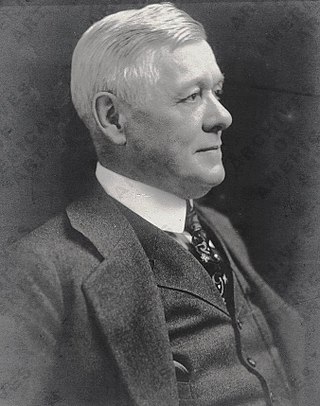
John Massey Rhind was a Scottish-American sculptor. Among Rhind's better known works is the marble statue of Dr. Crawford W. Long located in the National Statuary Hall Collection in Washington D.C. (1926).
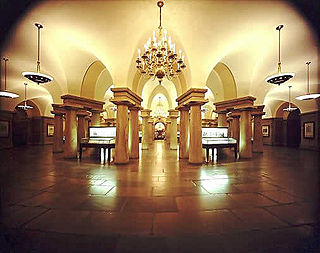
The United States Capitol crypt is the large circular room filled with forty neoclassical Doric columns directly beneath the United States Capitol rotunda. It was built originally to support the rotunda as well as offer an entrance to Washington's Tomb. It currently serves as a museum and a repository for thirteen statues of the National Statuary Hall Collection.

Preston Powers was an American sculptor, painter, and teacher, born in Florence, Grand Duchy of Tuscany. He is also known as William Preston Powers.
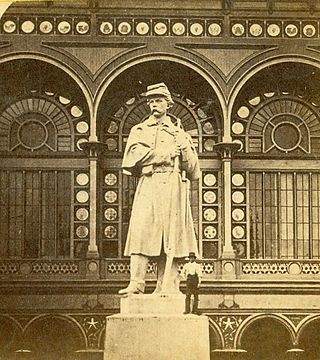
Carl H. Conrads was an American sculptor best known for his work on Civil War monuments and his two works in the National Statuary Hall Collection at the U.S. Capitol in Washington, D.C. He was also known as Charles Conrads.

A Once and Future Shoreline is a permanent public artwork that graphically marks the edge of Boston Harbor, circa 1630, into the granite paving blocks of the plaza on the West side of the historic Faneuil Hall building. The 850-foot-long artwork depicts the location of a pre-colonial shoreline by graphically etching silhouettes of materials that are found typically along the high tide line. The artwork offers a way to engage the imagination in an exploration of the changes to this now urban site from a salty tidal marsh, to an active pedestrian plaza.

James Paul Clarke is a marble sculpture depicting the American politician of the same name by Pompeo Coppini, installed in the United States Capitol's National Statuary Hall Collection, in Washington, D.C., as one of two statues gifted by the U.S. state of Arkansas. The 6 foot 10 inch tall statue was placed in the Hall in 1921. The work cost $7,500. and was unveiled in Washington in 1921. In 2024, the statue was removed and replaced with a statue of Johnny Cash.

Lew Wallace is a statue by Andrew O'Connor that has been produced in both marble and bronze versions.
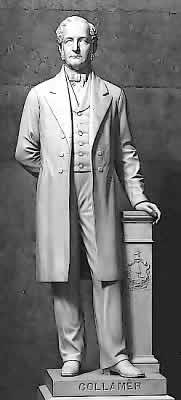
Jacob Collamer is a marble statue of Jacob Collamer by Preston Powers, installed in the United States Capitol, in Washington D.C., as part of the National Statuary Hall Collection. It is one of two statues donated by the state of Vermont. The statue was accepted in the collection by Alexander H. Stephens in 1881.

John Winthrop is a marble sculpture of John Winthrop by Richard Saltonstall Greenough, installed in the United States Capitol, in Washington D.C., as part of the National Statuary Hall Collection. It is one of two statues donated by the state of Massachusetts. The statue was accepted in the collection by George Frisbie Hoar on December 19, 1876.
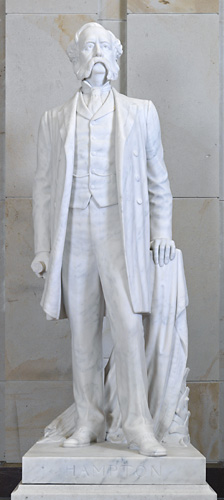
Wade Hampton III is a 1929 marble sculpture depicting the military officer and politician of the same name by Frederick Ruckstull, installed in the United States Capitol, in Washington D.C., as part of the National Statuary Hall Collection. It is one of two statues donated by the state of South Carolina. The statue was accepted in the collection by Duncan Heyward on June 10, 1929.

John M. Clayton is a 1934 marble sculpture depicting the American lawyer and politician of the same name by Bryant Baker, installed in the United States Capitol, in Washington D.C., as part of the National Statuary Hall Collection. It is one of two statues donated by the state of Delaware The statue was accepted in the collection by Robert G. Houston on June 6, 1934.

Philip Kearny is an 1888 bronze sculpture of Philip Kearny by Henry Kirke Brown, installed in the United States Capitol, in Washington, D.C., as part of the National Statuary Hall Collection. It is one of two statues donated by the state of New Jersey.
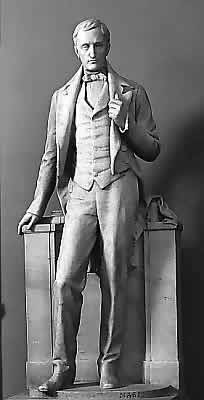
Crawford Long is a 1926 marble sculpture depicting the American surgeon and pharmacist of the same name by J. Massey Rhind, installed in the United States Capitol, in Washington, D.C., as part of the National Statuary Hall Collection. It is one of two statues donated by the U.S. state of Georgia.

Jacques Marquette is a statue by Gaetano Trentanove of Jacques Marquette, the best-known version being the 1896 marble one installed in the National Statuary Hall Collection in the Capitol in Washington D.C.
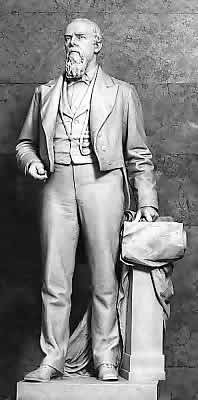
Oliver P. Morton is a 1900 marble statue of Governor Oliver P. Morton by Charles Henry Niehaus installed in the United States Capitol, in Washington, D.C., as part of the National Statuary Hall Collection. It is one of two statues donated by the state of Indiana. The statue was accepted into the collection on April 14, 1900, by Indiana Senator Albert J. Beveridge.
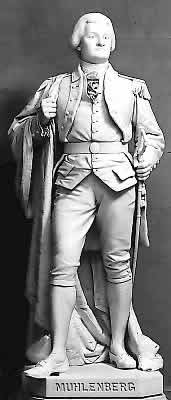
Peter Muhlenberg, or John Peter Gabriel Muhlenberg, is an 1889 marble sculpture depicting the American clergyman, soldier, and politician of the same name by Blanche Nevin, installed in the United States Capitol's crypt, in Washington, D.C., as part of the National Statuary Hall Collection. It is one of two statues donated by the state of Pennsylvania. The statue was accepted into the collection on February 28, 1889, by Pennsylvania Congressman Daniel Ermentrout.

Roger Williams is an 1872 marble sculpture of Roger Williams by Franklin Simmons, installed in the United States Capitol, in Washington, D.C., as part of the National Statuary Hall Collection. It is one of two statues donated by the state of Rhode Island. The sculpture was unveiled by Senator William Sprague of Rhode Island on January 9, 1872.

Roger Sherman is an 1872 marble sculpture of Roger Sherman by Chauncey Ives, installed in the United States Capitol, in Washington, D.C., as part of the National Statuary Hall Collection. It is one of two statues donated by the state of Connecticut. The sculpture was unveiled by Senator Orris Sanford Ferry of Connecticut on March 8, 1872.





















